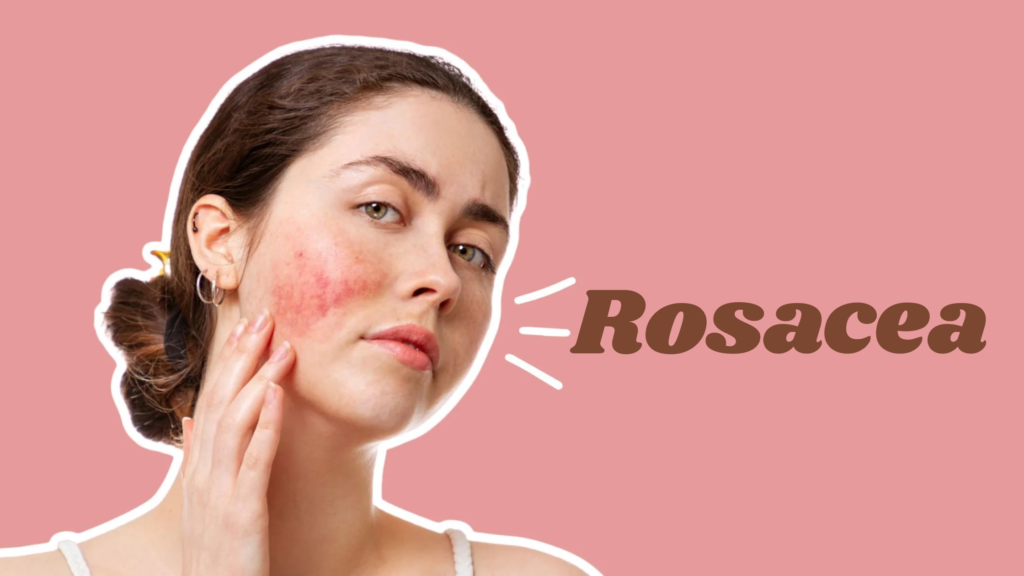🌹 Rosacea
Rosacea is a chronic inflammatory skin condition that mainly affects the face, causing redness, visible blood vessels, and sometimes acne-like bumps. It often worsens over time without treatment and is more common in fair-skinned adults over age 30.
🔍 Causes & Triggers
While the exact cause is unknown, possible factors include:
- Abnormal immune response
- Genetic predisposition
- Demodex mites (microscopic skin mites)
- Environmental triggers
Common Triggers:
- Sun exposure
- Hot or spicy foods
- Alcohol (especially red wine)
- Stress or emotional changes
- Heat or cold
- Certain skincare products
⚠️ Types of Rosacea
- Erythematotelangiectatic Rosacea (ETR):
- Persistent redness, flushing, and visible blood vessels
- Papulopustular Rosacea:
- Red bumps and pus-filled pimples, often confused with acne
- Phymatous Rosacea:
- Thickened skin, especially on the nose (rhinophyma)
- Ocular Rosacea:
- Irritated, red eyes and eyelids; dry or gritty eye feeling
🧪 Diagnosis
- Clinical exam by a dermatologist
- No specific test; diagnosis is based on history and visible signs
- May require ruling out acne, lupus, or allergic reactions
🛠️ Treatment Options
Topical Medications
- Metronidazole gel or cream
- Azelaic acid
- Ivermectin (targets inflammation and mites)
- Brimonidine or oxymetazoline (reduce redness temporarily)
Oral Medications
- Doxycycline (low-dose antibiotic with anti-inflammatory effect)
- Isotretinoin (in severe or resistant cases)
Laser & Light Therapy
- Intense Pulsed Light (IPL) or vascular lasers to reduce redness and visible vessels
🛡️ Self-Care & Management
- Identify and avoid personal triggers
- Use gentle, non-irritating skin care
- Daily sunscreen (SPF 30+)
- Avoid rubbing or scrubbing your face
- Use green-tinted makeup to mask redness
💬 When to See a Doctor
- If symptoms affect your confidence or quality of life
- If you notice eye symptoms or worsening of skin changes
- If over-the-counter products aren’t helping
